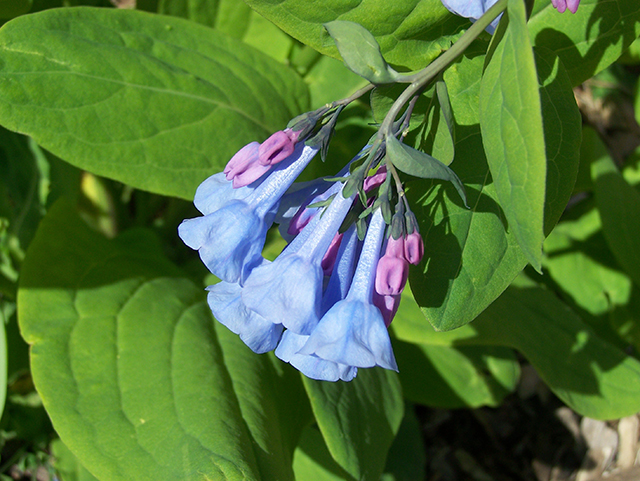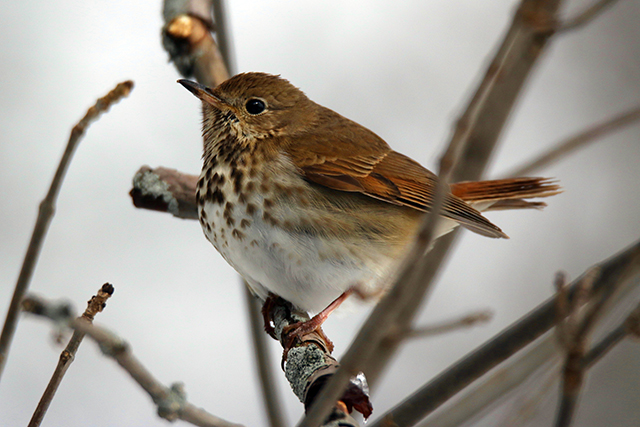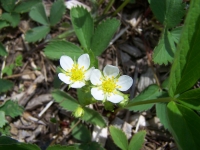As mentioned in a blog written recently about phenology (responses of plants and animals to changes in seasonal and climate), the Urban Ecology Center has had a friendly phenology competition for over 5 years documenting the first Red-Winged Blackbirds, Mourning Cloaks, Eastern Chipmunks, and Butler Gartersnakes that show up at our branches each spring. These species are signals of spring as they are either not active or present during the cold winter months here in Milwaukee.
Now we are turning the tables on you and are adding additional species to the challenge that all signify spring! The Urban Ecology Center has started a “project” on iNaturalist called “Spring Phenology in Milwaukee 2020” where you have a chance to contribute spring phenology data to the project from wherever you are in Milwaukee County!
iNaturalist is a free online tool that allows individuals to record observations of plants and animals in nature using just your smartphone! The data is then shared with others to help identify and then verify your sighting. All the data that people collect is then consolidated and are used for both science and conservation decisions! All it takes, is simply going outside and taking pictures of things that interest or intrigue you. iNaturalist will then help identify what you have documented, eventually connecting your observation with the broader scientific community! See how to get started below.
Here is our list of Spring Phenology Species that you can spot in your own backyard or window! If you want to do research ahead of time, you can find many images of these species online to prepare yourself. You can find photos of them online or here
Plants:
Bloodroot, Box Elder Flower, Cut-leaved Toothwort, Hepatica, Marsh Marigold, Mayapples, Pasque Flower, Spring Beauty, Trillium, Trout Lily, Virginia Bluebells, Virginia Waterleaf, Wild Onions, Wild Strawberry, Willow, Wood violet.

Virginia Bluebells. Photo by Matt Flower
Animals:
American Robin, *Any bat sighting, **Any salmon sighting, Brown Creeper, Butlers Gartersnake, Common Grackle, Eastern Chipmunk, Eastern Phoebe, Great Blue Heron, Hermit Thrush, Killdeer, Mourning Cloak, Red-Winged Blackbird, Spring Peeper, **White Sucker, Yellow-bellied Sapsucker
*Email This email address is being protected from spambots. You need JavaScript enabled to view it. with your sighting if you happen to see a bat prior to May 15th as they are nearly impossible to capture a photo of during the night.
**Download the Great Lakes Fish Finder app which is an extension of iNaturalist to collect data on fish sightings!

Hermit Thrush. Photo by Bruce Halmo
How to get started with iNaturalist?
Simply download the free iNaturalist app from the Apple or Google Play store and create an account for yourself that can also be shared by multiple people. Alternatively, you can set up an account on the iNaturalist website. You will have to choose a username and password and then you are set to go! Remember, you can use iNaturalist on both your phone or online.
Time to Get Outside!
- Before you get outside and start taking pictures of cool things, make sure that your phones location services have been turned ON for your camera and for the iNaturalist app. This can be configured in your location services on your phone. This project congregates data from within Milwaukee County. For those outside of Milwaukee County, you can still contribute data, it just won’t show up in the “Spring Phenology in Milwaukee 2020” project on iNaturalist.
- Once you see a plant or animal (ideally one of our spring focal species), open the iNaturalist app. Animals like birds and chipmunks can be hard to capture a photo of as they are constantly moving. However with a little patience you may just get a good photo with your camera or phone. Pro Tip: If you don’t have a camera but have a smartphone and binoculars, you can get a closer picture if you hold your phones camera up to the lens of the binoculars.
- When you have found the species you want to take a photo of, tap the observe button and then snap the photo whenever you’re ready to.
- After taking the photo, you can choose to retake the photo or move on.
- Clicking next will take you to the observation page with details of when and where you took the photo. If your settings are set up correctly, iNaturalist will automatically update the location and time of the photo you just took.
- You have the option to take additional photos of your observation on the same page to add to your documentation.
- With your stellar photos in place, tap the “What did you see?” box. If you are connected to the internet, it will then suggest potential identifications based on your photographs.
- If you are unsure of the identification of your subject, you can pick a suggestion from the drop down. The suggestion that states in green “Visually Similar/Seen Nearby” is a good option to pick. If you know in general what you took a picture of, you can type in your own identification using the search bar (e.g., “Red-Winged Blackbird” or “bird” or even “animal” works as identifications)
- Time to move on to another observation!
- Want to see all the data that has been collected? Click the “More” tab in the bottom right hand corner and select the “Projects” button. Search “Spring Phenology in Milwaukee 2020” in the search bar and select that option to see the community’s observations and data that they have all contributed!
If you are interested in contributing general phenology data specifically at our Urban Ecology Center branches, you can search and then join the “Urban Ecology Center Phenology” to contribute data to this long term project. Remember, you must have taken the photo within the park boundaries or it won’t get filtered into the Urban Ecology Center Phenology project.
For further explanation and instructions about using iNaturalist, check out the Getting Started guide. Or check out their video tutorial guide for a more thorough explanation!
As last reminders:
- Please always stay on the trails and never pick, dig up or remove any plants! Trampling of vegetation is illegal according to the Milwaukee County Parks ordinance.
- Please practice - Leave No Trace.
- Please abide by CDC social distancing guidelines and maintain a distance of more the 6 feet apart from others if you are outside.
- Lastly, have fun and we hope to see your spring time observations!





